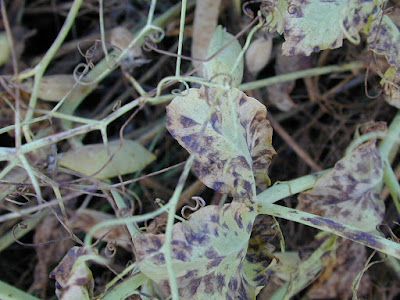The spring and summer of 2023 was challenging for Prairie producers who experienced very dry conditions, especially under dryland production. Although this limited disease issues, the drought stress had a very significant negative impact on stand establishment, crop growth, and yield. However, some Prairie regions did receive moisture during the course of the summer and in these regions field crop diseases may be more of a concern.
During June and July, crop scouting for the ascochyta/mycosphaerella complex in field pea is critical for assessing risk and gauging the need for and timing of an in-crop fungicide application. However, late season crop scouting is also important as it can be used to assess the prevalence, severity and impact of these disease issues. Where unsprayed check strips or areas have been left in the field, late season assessments can be used to assess the impact and benefit of spraying in relation to leaf disease management and crop productivity.
It is critical to assess end-of-season leaf spot levels at the correct growth stage although the same scale can be used at early flowering to gauge disease development and the need to apply fungicide. Assessment of leaf diseases becomes very difficult if plants have started to ripen.
 |
| Symptoms of mycosphaerella/ascochyta complex |
 |
| Symptoms of mycosphaerella/ascochyta complex |
 |
| Symptoms of mycosphaerella/ascochyta complex |
Access suggested survey protocols and scouting information for the ascochyta/mycosphaerella complex for field pea at:
Ascochyta/mycosphaerella survey protocols
Ascochyta/mycosphaerella scouting information
